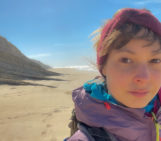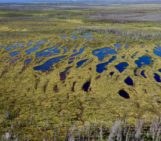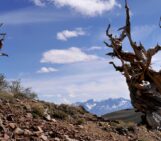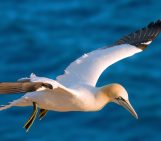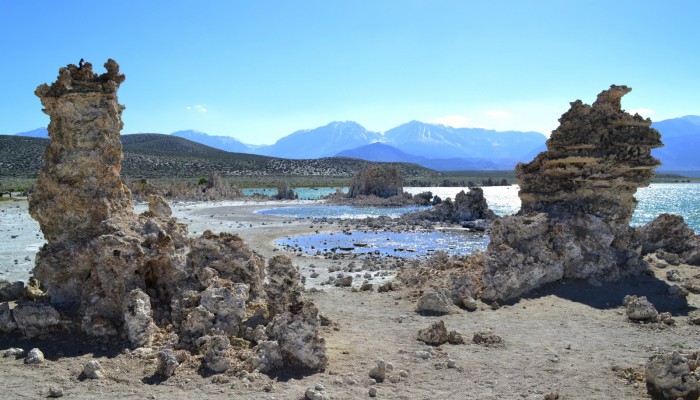
With the Imaggeo Photo Contest opening last week, what better than feature one of the 2015 competition finalists as this week’s Imaggeo on Mondays image. In this post, Irene Angeluccetti, author of the photograph, writes about the threatened ecosystem of Mono Lake. If you’ve been inspired by Irene’s photograph, why not entre the photo contest for your chance to win a free registration to the General Assembly in 2017? You can find out more by reading this blog post.
On a brief stop on the road from the Yosemite park to Las Vegas, we got hooked by some postcards depicting the nearby Mono Lake. We decided immediately to make a quick detour to visit the Natural Reserve surrounding the lake. Although noon wouldn’t provide the best light over the lake, we spent an hour wandering among the towers of the South Tufa area.
The alkaline Mono Lake waters, with a pH of 10 and far more salty than the ocean, are home to crowds of alkali flies and brine shrimps. These in turn are food for dozens of different waterbird species.
Mono Lake’s unique ecosystem has long been threatened by a constant decrease in water level due to water diversion. A dramatic water level drop has been observed since its tributaries started being diverted to meet the need of the Los Angeles growing water demand since 1941 on. By 1978 the lake water levels had dropped by almost half of its original volume, spurring the creation ofcitizens committee which started to take care of the future of the lake. The effort of the committee, in protecting Mono Lake, has led to the partial restoration of the original water volume. However periods of extreme drought still threaten this fragile ecosystem.
Western USA is facing one of the most severe droughts on record. In particular, California is entering the fourth year of a drought that is creating an extremely parched landscape. An effective drought monitoring is essential to plan response and recovery actions. This is especially true in the case of low-income countries prone to agricultural droughts and subsequent famine crisis.
By Irene Angeluccetti, researcher at ITHACA – Information Technology for Humanitarian Assistance, Cooperation and Action
If you pre-register for the 2016 General Assembly (Vienna, 17 – 22 April), you can take part in our annual photo competition! From 1 February up until 1 March, every participant pre-registered for the General Assembly can submit up three original photos and one moving image related to the Earth, planetary, and space sciences in competition for free registration to next year’s General Assembly! These can include fantastic field photos, a stunning shot of your favourite thin section, what you’ve captured out on holiday or under the electron microscope – if it’s geoscientific, it fits the bill. Find out more about how to take part at http://imaggeo.egu.eu/photo-contest/information/.

